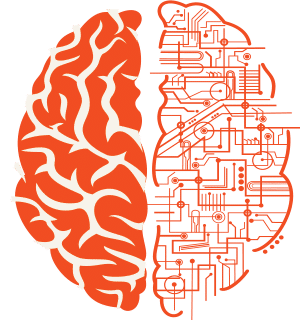Art Processing Sharing Blog


Free running Studio Artist V5.5 paint synthesizer time particle animation. Time particles are a feature of the paint synthesizer that let your paint strokes have continuity over time in an animation.
I used a Transition Context to create an ever evolving source for painting derived off of 5 different Transition Context key-framed still images. So the source being painted is virtual. It is always changing and evolving over time.
This animation shows of the dynamic interaction of the 2 main components of digital painting, the laying down of colored 'stuff' on the canvas, and the application of dissipative forces that smear and manipulate it in some way. I'm using 2 different applications of the Smart Blur IpOp effect to do the dissipation. One is adaptive smoothing based on the virtual source orientation. The other is adaptively smoothing based on the orientation of what is already in the canvas. So the first introduces visual components of the virtual source into the painted canvas. The second adaptively smooths detail already in the canvas, essentially reinforcing it as a visual component of the overall canvas image as it adaptively. smooths it. So there are 2 different dissipative forces battling it out as the animation progresses.
This approach to working with time particles is one way to build procedural paint animation. By procedural we mean that the movement in the animation is computationally derived from algorithms that work based off of the individual parameter settings in the 2 Time Particle control panels in the paint synthesizer. The computational model used by the paint synthesizer time particles is very similar to how it generates paint paths for normal painting. The difference is that the movement plays out over time rather than just being associated with the drawing of an individual paint path on the canvas in a static image.
An alternative approach to building animation movement would be to use key-framing in the PASeq Timeline. Or to build a set of bezier paths and then configure the paint synthesizer to move path start locations derived off of the shape and positioning of the individual bezier paths.
If you are not interested in animation and only work with static 2D art image output in your work you can still view this whole approach as a way to build a single static 2D painted image through a recursive process that plays out over time. I believe this approach to 2D painting can be very effective, and is worth exploring in depth. very subtle changes in how you apply dissipative or contrast 'expansive' forces to the canvas in a recursive process like this can dramatically influence the overall appearance of the end result.
Hi, here is a new video, lots of MSG (background layer) and MSG generation path starts along with Time Particles in the paint synth, the "Piggy" figure I made in ZBrush and then animated in Blender, with embedded alpha channel, then took into Studio Artist and made into several different kinds of Movie Brushes. Several layers composited together in Blender. Music made with Bespoke Synth and my Shenai. If anyone has any questions about how it was done I'd be happy to explain more.…
I am not sure if this forum is active anymore... I thought it would be fun to post a very early piece of mine made with, probably, SA3 or 4. I have been a user since 2001.
"Chromosome Rain", 2010
Another experiment painting with Paint Synth vector based presets. Captured rather than output to file.
Either the night sky before the Day of the Triffids - or a closup of Star Treks The…
A capture of a PasEq playback (all I had left after a crash) I didn't save the over sized Paint Synth Presets that I was adjusting and testing... But I did save the PAsEq. This would be what…
Working with Source .png Images Turning the alpha channel on for transparent .png backgrounds When using .png source images with transparent backgrounds, you will need to set Canvas > Selection > Set to > Source Alpha and then Check Mask…
Basics of the Dual Paint Mode, Concepts and How to Create Your Own Dual Paint Presets For More Information on Dual Paint please see this DUAL PAINT POST For More Information DUAL PAINT POST
The post…
How to Erase the Canvas To erase the canvas choose the Eraser Icon at the top of the Interface or choose Canvas > Erase to See this Post for more detailed information on the canvas eraser options.
The post…
Everything You Need to Know about Studio Artist Presets and Preset Management
The post Preset Management Video appeared first on Studio Artist…
Resizing the Canvas Please see this tip on Resizing the Canvas And how to Resize the Canvas for High-Resolution Print
The post Resizing the Canvas appeared first on…